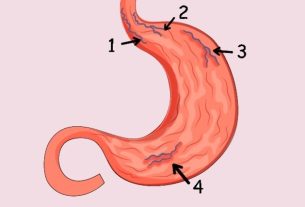Liver cancer is a type of malignant tumor that originates in the cells that form the liver, such as hepatocytes, bile ducts or blood vessels, and is generally quite aggressive. The symptoms of liver cancer usually only appear in more advanced stages of the disease, with pain in the abdomen, nausea, loss of appetite, weight loss and yellowing of the eyes.
People with fatty liver, liver cirrhosis or who use anabolic steroids are at greater risk of developing this cancer, which is usually identified by an abdominal imaging test, such as ultrasound or tomography, capable of detecting one or more nodules in the liver.
Treatment involves surgery and chemotherapy, depending on the size and severity, and the chances of a cure are greater when the tumor is identified early, in the earliest stages. When it is no longer possible to cure liver cancer, survival time is approximately 5 years, but this value may vary according to the degree of development of the disease and other illnesses in the patient.

Symptoms of liver cancer
The main symptoms of liver cancer are:
- Belly pain, especially on the right side of the abdomen;
- Belly swelling, due to the accumulation of fluids;
- Weight loss without apparent cause;
- Loss of appetite;
- Excessive tiredness;
- Yellow skin and eyes;
- Fever;
- Whiter stools;
- Constant nausea.
Symptoms of liver cancer usually appear when the cancer is already well developed and, therefore, in most cases, liver cancer can be discovered at an advanced stage, which reduces its chances of cure.
Therefore, when there are risk factors, such as excessive alcohol consumption or liver disease, it is important to have regular consultations with the hepatologist to frequently evaluate the liver and observe changes that may arise.
Don’t ignore your symptoms!
In cases where any of these symptoms appear, or there are many risk factors, it is advisable to consult a hepatologist to carry out diagnostic tests, such as abdominal ultrasound, computed tomography or magnetic resonance imaging, to confirm whether there are changes that could indicate the presence of a spot or nodule that is suggestive of a tumor. Find out more about tests to evaluate the liver.
It is important to remember that not every nodule or cyst in the liver indicates cancer, and you should wait for the doctor to analyze its characteristics, being able to conclude whether there is a risk or not. If suspicious changes are identified, the doctor may order a biopsy of a piece of liver to check in the laboratory whether there are cancer cells in the organ. Understand when a liver cyst is dangerous.
For less suspicious cases, it is recommended to repeat the exams periodically, every year or every 3 years, depending on each case, so that it is possible to monitor whether there is growth or development of new characteristics that could indicate cancer.
Who is most at risk
Although anyone can develop liver cancer, this type of cancer is more common in people with:
- Chronic infection with hepatitis B or C viruses;
- type 2 diabetes;
- Fatty liver;
- Excessive alcohol consumption, which can increase the risk of liver cirrhosis;
- Obesity;
- Smoking.
In addition, long-term cases of ulcerative colitis or sclerosing cholangitis can also develop liver cancer more easily.
Types of liver cancer
Liver cancer can be primary, that is, when it arises directly in the liver, or it can be secondary, due to metastasis or spread of cancer from other organs, such as the lungs, stomach, intestine or breast, for example.
The most common type of primary liver cancer is hepatocellular carcinoma or hepatocellular carcinoma, which is also the most aggressive, and originates in the main cells that form the liver, called hepatocytes. Another common primary tumor is cholangiocarcinoma, originating in the bile ducts.
Other rarer tumor types include fibrolamellar variant liver carcinoma, angiosarcoma or hepatoblastoma, for example.
How the treatment is carried out
Treatment for liver cancer depends on the size and type of cancer, location, whether it has metastasized and the person’s general health.
In general, treatment may involve surgery, chemotherapy, radiotherapy, thermal ablation, which is the use of heat to destroy cancer cells, and targeted therapy, which is the use of medications that directly attack cancer cells.
Surgery is performed to remove the affected part of the liver, and is normally performed in the early stages of the disease and/or when the cancer is small. However, in more serious cases, it may be necessary to remove the entire organ and perform a liver transplant. Understand how a liver transplant is performed.
Chemotherapy, thermal ablation, radiotherapy and targeted therapy are performed when the cancer cannot be removed by surgery, when the person’s health does not allow the surgical procedure to be performed or when the cancer has spread to other organs.
Bibliography
- NATIONAL CANCER INSTITUTE. Liver Cancer Treatment. Disponível em: <https://www.cancer.gov/types/liver/what-is-liver-cancer/treatment>. Acesso em 29 ago 2023
- MOFFITT CANCER CENTER. Types of Liver Cancer. Available at: <https://www.moffitt.org/cancers/liver-hepatocellular-cancer/types/>. Accessed on Aug 29, 2023
- CANCER COUNCIL. Liver cancer. Available at: <https://www.cancer.org.au/cancer-information/types-of-cancer/liver-cancer>. Accessed on Aug 29, 2023
- NATIONAL HEALTH SERVICE. Treatment for liver cancer. Available at: <https://www.nhs.uk/conditions/liver-cancer/treatment/>. Accessed on Aug 29, 2023

Sign up for our newsletter and stay up to date with exclusive news
that can transform your routine!
Warning: Undefined array key "title" in /home/storelat/public_html/wp-content/plugins/link-whisper-premium/templates/frontend/related-posts.php on line 12
Warning: Undefined array key "title_tag" in /home/storelat/public_html/wp-content/plugins/link-whisper-premium/templates/frontend/related-posts.php on line 13



